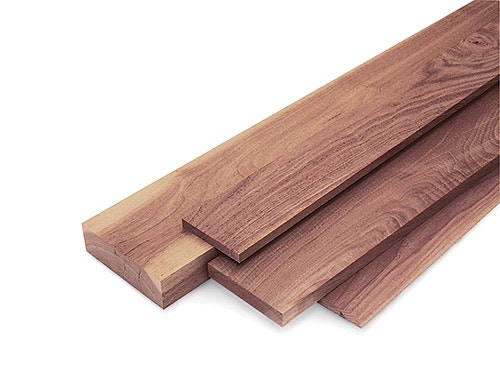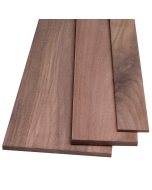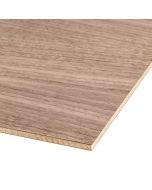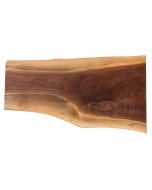Black Walnut: Juglans nigra
Prized for everything from gunstocks to sideboards, black walnut is a perennial woodworking darling.
Black walnut's chocolate-brown heartwood and creamy white sapwood have made it one of the most sought-after North American hardwoods for centuries. The lumber machines easily and finishes beautifully. Many woodworkers treat it with the reverence of a rare exotic, saving it for accent pieces or small components of a larger project. But the lumber is not scarce, and it often can be found in impressive widths and lengths, as well as thick planks and natural-edge slabs.
Walnut thrives abundantly in small groves in alluvial soils throughout the Eastern United States, occurring naturally throughout the East and Midwest except in the Mississippi Valley and Delta and the sandy Southern coastal plain areas.
The trees grow as tall as 75 to 100 feet and two to four feet in diameter. It is intolerant of shade and protects itself from competition by emitting a chemical concentrate known as juglone, which inhibits growth in a number of plants. The sawdust of black walnut is considered to be a strong allergen and can adversely affect horses and dogs if the material is used as bedding, so dispose of black walnut sawdust with care.
Improved Gene Pool
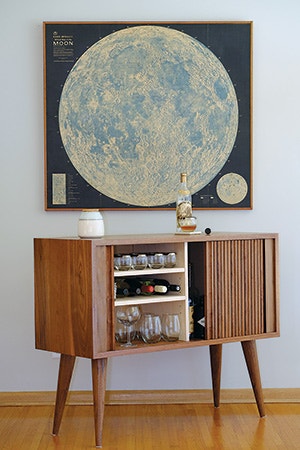
Black walnut was the wood of choice for fine furniture manufactured in the United States until the late 18th century. The wood is still used extensively, but with increased demand, it is now most often cut into veneer. The popularity of black walnut led to its eventual decline. The best and straightest of trees were harvested, leaving only the short and limb-laden trees to carry on the gene pool. Research was begun in the mid 20th century to select better trees for replanting, and the quality trees are now once again available.
Walnuts are edible, of course, but their shells are widely used as well. During World War II, for instance, airplane pistons were cleaned using ground walnut shell blasted against the pistons.
Air-drying preserves walnut's coveted brown heartwood color best. Kiln-drying often imparts a gray or purplish cast to the wood. One easy way to warm the brown tone is to color the wood with orange dye or thinned, cherry- colored oil stain. Clear finishes of all sorts accentuate walnut, especially lacquer and oil-based varnish.
Shop Score Card
|
Uses: Furniture and case goods, veneer, gunstocks, mantels, plaques, knobs, pulls and other turnings. Hardness: Soft to medium density; dents easily. Country of Origin: Eastern North America.Workability: Coarse and generally straight-grained, walnut works easily with hand and power tools. The lumber seasons reasonably well but can check if dried too quickly . Kiln-drying can affect color. Finishing: Dyes and stains can remedy gray or purplish cast. Oils and clear film finishes accentuate grain and figure. Polishes to a beautiful shine. Cost: Expensive, compared to cherry, oak, maple and other domestic furniture-grade hardwoods. |
Keep the inspiration coming!
Subscribe to our newsletter for more woodworking tips and tricks
